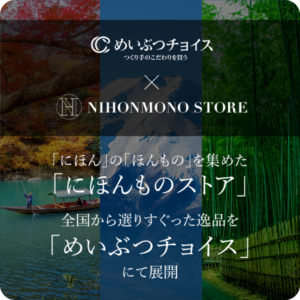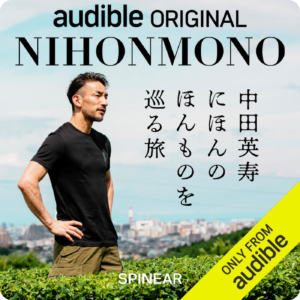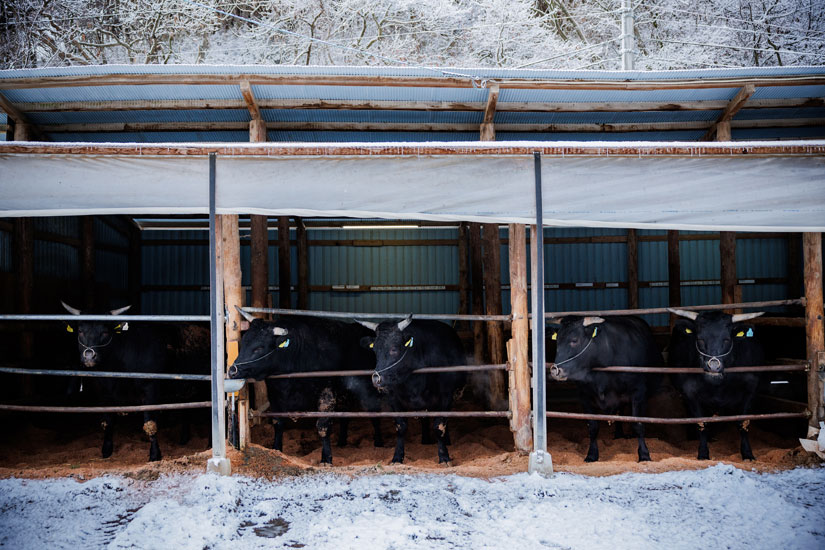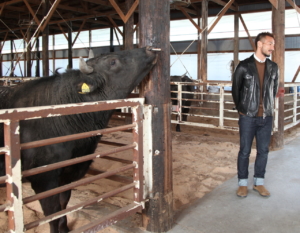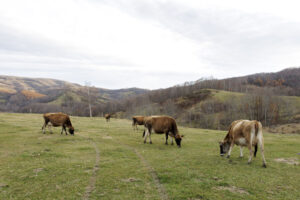Ishinomaki City in Miyagi Prefecture is relatively mild and snowfall is rare. However, on the day of my visit, it was a silver world. Inside a cattle barn, Japanese black cows were exhaling white breath as they slowly ate rice straw. The cattle were not just livestock, but also a long-standing tradition. They are not mere livestock, but have been nurtured by the skills and passion of craftsmen over many years.
The Stature of Black Wagyu Cattle Encountered in a Snowy Barn
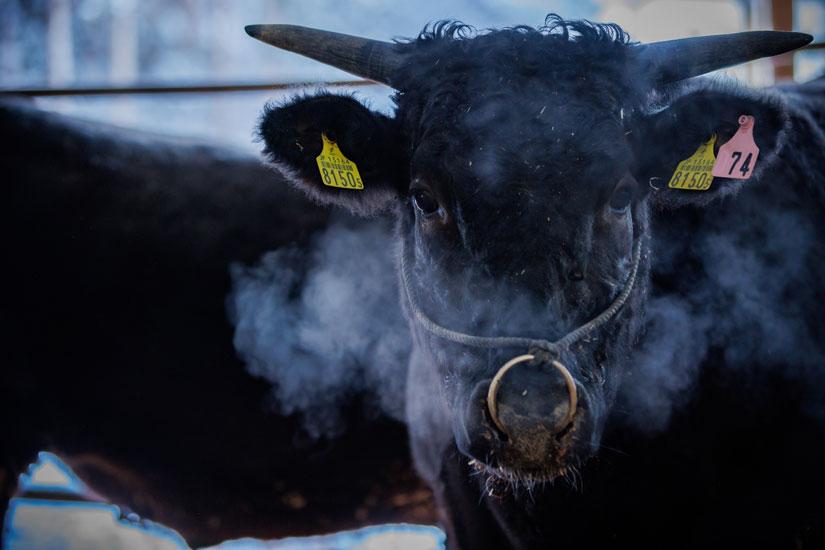
Producer Daiki Kawamura’s cattle, which won honorary awards two years in a row at the National Beef Beef Cattle Carcass Kyoyokai in 2016 and 2017, are raised in this barn. Instead of being raised on pasture, where they roam freely in vast pastures, they are raised in a barn that provides an optimal environment under thorough management. From the creation of a stress-free space for the cows to the feed they are fed, which is the result of years of trial and error, to the thorough health management, no compromises are allowed.
The starting point of cattle breeding and commitment to bloodlines
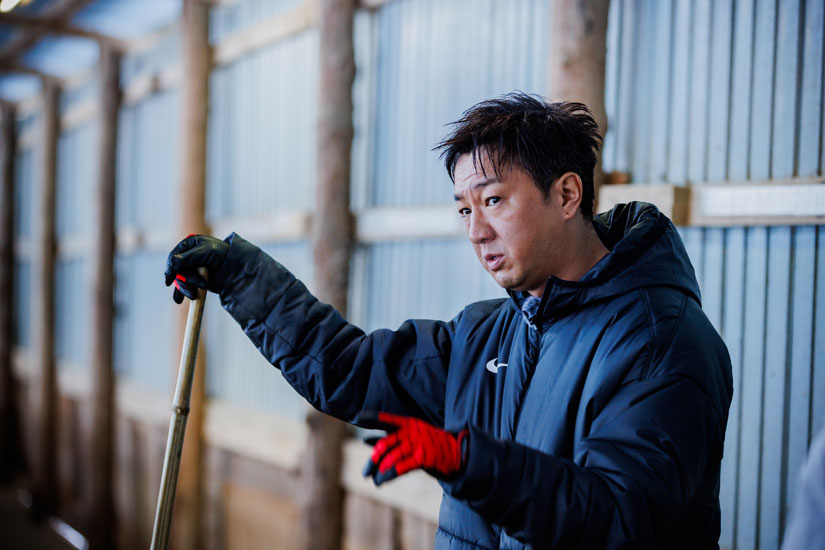
Kawamura Farm is a fattening farm started by Mr. Kawamura’s grandfather. A fattening farmer is a farmer who buys calves and raises them. On the other hand, breeding farmers are those who raise calves by raising mother cows.
Fattening and mating farmers are often separated because they each have different expertise in raising cattle. Some farmers are both fattening and mating farmers, but especially in Miyagi Prefecture, fattening and mating are separated, Kawamura said.
Kawamura Farm started out as a cattle farmer, raising Holsteins, but gradually shifted to Wagyu black cattle. At that time, each of the neighboring farmers had a cow, and through the so-called “livestock dealer” business of buying, selling, and brokering livestock, the number of cows at Kawamura Farm was increased.
By the way, it is said that the quality of beef brands such as “Sendai Beef,” “Matsusaka Beef,” and “Kobe Beef” is largely dependent on pedigree. Mr. Kawamura says, “When I look at the great cattle that win champions at fairs, like Deep Impact in the case of horses, I think it is the pedigree of the cattle. I myself believe that 70% is determined by pedigree,” he says. He says that he sometimes purchases calves from all over the country that are born to bulls that have excellent pedigrees and provide their sperm. When asked what makes up the remaining 30%, he laughed and said, “I would like to say arms, but…” He went on to say that it is important to bring out their abilities without accidents, and to grow cows that eat, sleep, and eat repeatedly.
Ideal Meat Quality Achieved by Cattle Barn Raising
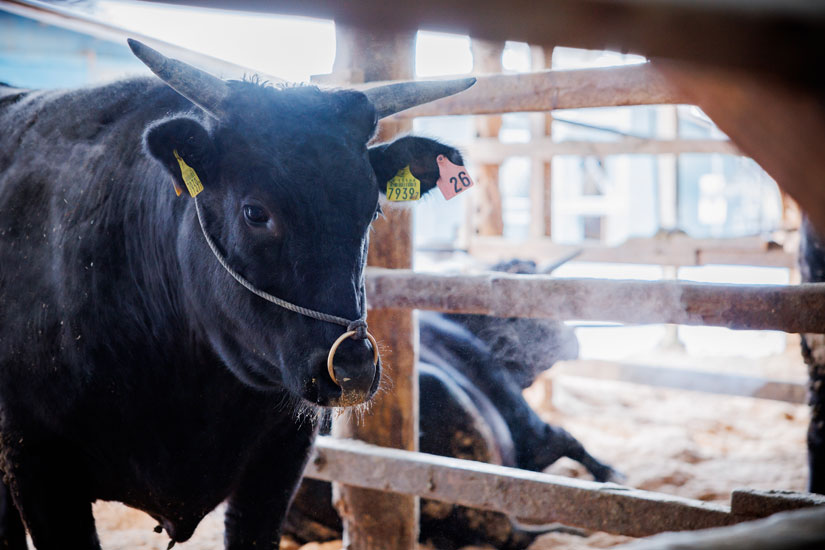
Mr. Kawamura’s cows are raised in a barn, and there is a clear reason for this.
The greatest advantage of barn-raising is that the environment can be closely controlled. Cattle are sensitive to changes in temperature and humidity, and a cold can affect meat quality. In a barn, the heat of summer and the cold of winter can be properly controlled, and a comfortable environment can be maintained at all times for the cows.
In addition, it is easier to manage feed. With pasturage, what cows eat depends on the natural environment, but with barn rearing, it is possible to systematically provide nutritionally balanced feed. As a result, ideal marbling is formed and meat quality is stabilized.
In addition, by properly designing the barn space, “too much movement and muscle build-up” can be avoided. In addition, thorough barn hygiene and observation of cows will help prevent disease and ensure healthy growth.
Inquiry into feed and an environment set up with music
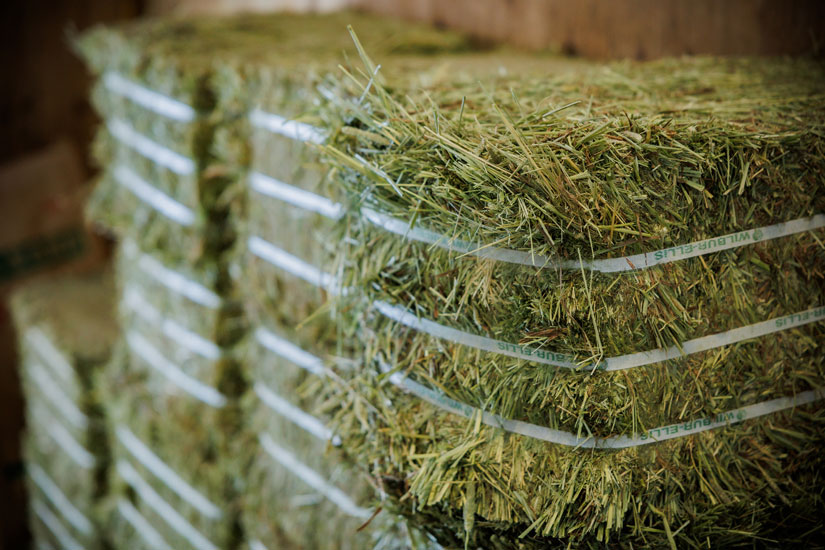
Kawamura Farm has a total of four barns, and each barn has a different method of raising cows.
Each barn takes into consideration the environment and the sensitivity of the cows, which are greatly affected by it. The most important factor is feed, which is one of the most important factors in determining the taste of Wagyu beef.
After 20 years of farming, Mr. Kawamura has tried various feeds and self-formulations, and says, “After trying many things, I came to a simple solution. Instead, he says, “I experiment in one of my four barns by trying different things. Simple” means that the feed is procured by the cooperative from the manufacturer, and what used to be a “trade secret” among the farmers is now shared among them. Kawamura Farm also uses three different types of feed depending on the growth stage of the cows, and plays music to help them relax and eat more.
Honorary Award Proves Kawamura Farm’s Strength
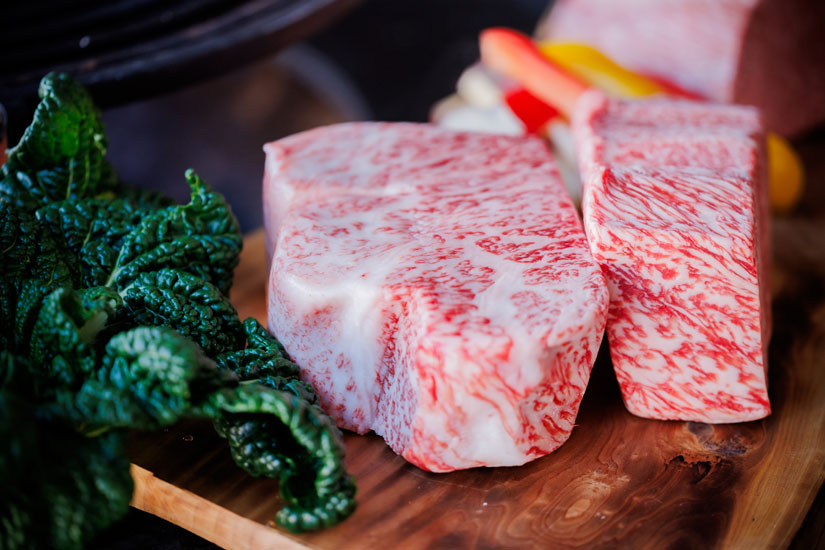
The barn where Mr. Kawamura’s cows are raised is more than just a breeding facility. The high quality of the meat produced there is proven by the fact that, as mentioned earlier, the cows were awarded the “Honorary Prize,” the highest prize, out of approximately 500 cattle selected from all over Japan at the National Beef Cattle Carcass Promotion Association, a gathering of Wagyu beef producers from all over Japan.
The National Beef Beef Beef Carcass Competition is an opportunity for outstanding Wagyu beef producers from all over Japan to compete in the meat quality of the cattle they have raised themselves. At this competition, not only the amount of marbling, but also the tightness of the meat, color, fat quality, flavor, and other factors are evaluated in a comprehensive manner.
Mr. Kawamura’s cattle received overwhelming evaluations for the beauty of the marbling, tenderness of the meat, and sweetness of the fat. I actually had the opportunity to taste the meat, and the quality of the fat was not only sinewy, but also outstanding, with a texture that melted in the mouth and a rich flavor.
This prestigious award is not something that can be acquired overnight. It is the result of many years of trial and error, meticulous management in the barn, selection of the best feed, and careful attention to each cow.
Toward a Sustainable Future for Sendai Beef
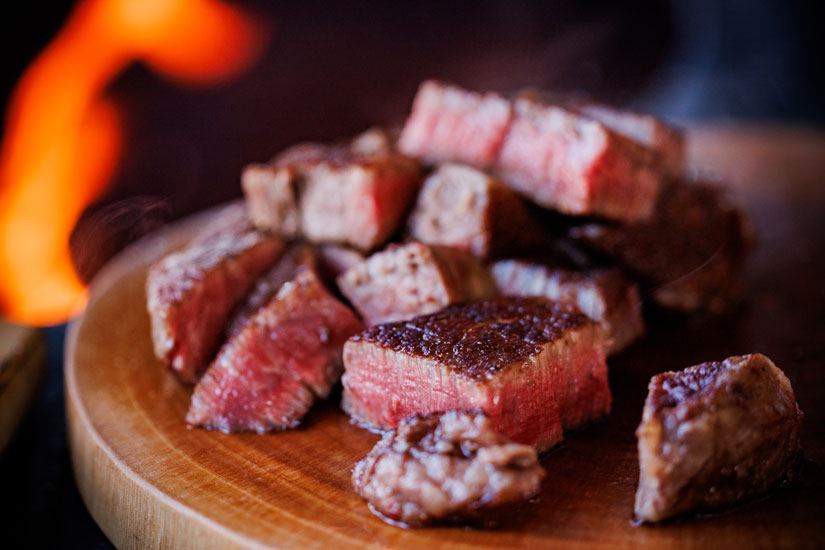
Mr. Kawamura raises Sendai beef, which is the pride of Miyagi Prefecture, and only A5 grade beef is allowed to claim the name. Among the A5 ranks, there are three grades of marbling (fatty crossbreeding): 8, 9, 10, 11, and 12. The higher the number, the more marbled the meat, with 12 being the most marbled. Mr. Kawamura’s goal is to always produce Sendai beef that is 10 or higher. As he raised his cattle, he was no longer satisfied unless they were 10 or higher. Prices also vary according to this rank, but he has noticed a change in food preferences when customers who have tasted 12 beef say they prefer the leaner cuts. Mr. Kawamura will continue his pursuit of the “12” beef, which is light, clean, and well-seasoned.
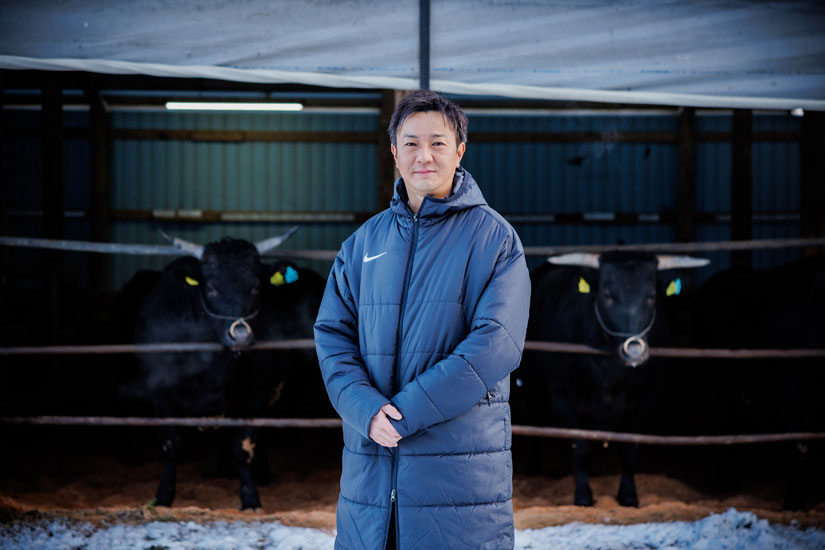
The environment surrounding Wagyu beef production is becoming increasingly severe year by year. Soaring feed prices, the effects of climate change, lack of successors, and declining demand for meat are just a few of the challenges. Besides, the price of calves rises with the competition when pedigrees are emphasized, and it becomes “not worth it” considering the length of time required to raise them. However, in order to overcome these difficulties, Mr. Kawamura is exporting beef overseas, where domestic consumption is becoming more and more difficult.
Furthermore, he is struggling to keep Sendai beef production going by buying or renting barns from farmers who have quit due to lack of successors at Kawamura Farm.
As a young farmer leading the industry, Mr. Kawamura’s challenge continues.
